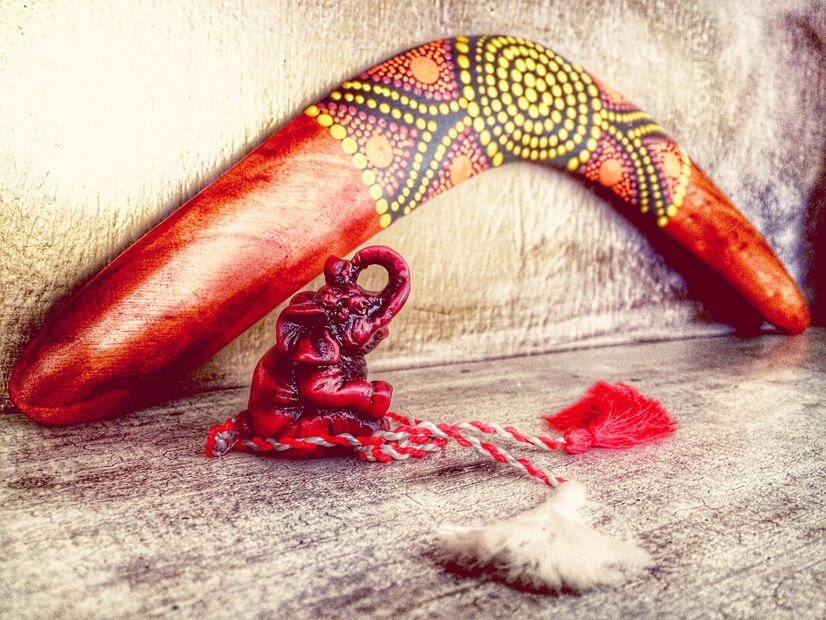The cornicello, also known as the “little horn,” is a distinctive Italian amulet with a rich history and deep cultural significance. This small, curved horn-shaped charm has become a symbol of good luck, protection, and the warding off of the “evil eye.” It’s widely recognized in Italy and among Italian communities worldwide, and its meaning and use have evolved over time. In this article, we’ll explore the history, symbolism, and uses of the cornicello horn, as well as how it continues to play a role in modern culture.
What Is the Cornicello Horn?
The cornicello is a small, bent charm that resembles a horn or chili pepper. It is traditionally crafted from materials such as gold, silver, or red coral. The amulet’s shape often evokes the image of a crescent or the horn of an animal, which in various cultures has been linked to fertility, strength, and protection. The cornicello is commonly worn as a pendant on a necklace or used as a keychain, but it can also be found in other forms, such as earrings, bracelets, or even incorporated into home décor.
The History of the Cornicello Horn
The cornicello has a long and varied history, particularly in Mediterranean cultures. Its origins can be traced back to ancient Italy and other parts of Europe, where similar horn-shaped amulets were believed to have protective powers. These types of charms have been worn by people throughout history to ward off negative influences or malicious intentions.
In ancient times, the horn symbol was often associated with deities, fertility, and the power to avert evil forces. The cornicello, in particular, became popular during the Renaissance period, when Italian noble families used the horn as a symbol of status and a form of protection from jealousy and bad luck. Over time, the charm spread to other regions, including Latin America, where Italian immigrants brought the tradition with them.
The Symbolism Behind the Cornicello Horn
The cornicello is rich with symbolism, particularly when it comes to protection and good fortune. Below are some of the key meanings associated with the cornicello horn:
- Protection Against the Evil Eye: The most widely recognized belief surrounding the cornicello is its ability to protect the wearer from the “evil eye” (malocchio in Italian). This concept, prevalent in many Mediterranean cultures, refers to the harm that can come from a jealous or envious look. The cornicello is thought to deflect such negative energy and protect the wearer from bad luck or ill will.
- Good Luck and Fortune: The cornicello is also seen as a symbol of good luck. Its curved shape and bright red color (often associated with vitality) are believed to bring positivity and good fortune to the wearer. For this reason, many people wear the cornicello as a charm to attract good luck, especially in new ventures or when embarking on a journey.
- Fertility and Strength: In ancient cultures, horn-shaped objects were often associated with fertility and the ability to procreate. The cornicello is thought to carry similar meanings, particularly for women trying to conceive. Its shape, which resembles a crescent or an animal’s horn, is symbolic of natural strength and the cycles of life.
- A Symbol of the Italian Culture: The cornicello is deeply ingrained in Italian culture, and wearing one is often seen as a way to honor one’s heritage. Many Italians, particularly those living abroad, wear the cornicello to connect with their roots and to carry a piece of their culture wherever they go.
How to Wear the Cornicello Horn
The cornicello horn is a versatile amulet that can be worn in various ways, depending on personal preference and cultural tradition. Here are some common ways to wear or display the cornicello:
- Necklace or Pendant: The most common way to wear a cornicello is as a pendant on a necklace. It can be worn close to the heart, symbolizing the protection of the wearer. Gold or silver chains are popular choices to complement the charm’s appearance.
- Keychain or Bag Charm: Many people carry a cornicello as a keychain or bag charm, particularly for added protection in daily life. This allows the charm to be with the person at all times, subtly providing luck and protection.
- Bracelets or Earrings: For a more subtle way to wear the cornicello, some people choose to wear it as part of a bracelet or earrings. These can be particularly stylish, especially when paired with modern jewelry designs.
- Home Décor: In addition to personal wear, the cornicello is sometimes used in home décor, particularly in Italian households. It is often placed near doors, windows, or in places where protection is desired.
The Cornicello in Modern Culture
While the cornicello originated as an ancient talisman, it continues to hold a significant place in modern culture. Today, people wear it not only for its traditional meanings but also as a fashion statement. The bright red color and unique shape make it a popular accessory in contemporary jewelry, and it is often incorporated into modern designs to add a cultural flair.
The cornicello has also transcended its Italian roots, finding its way into various international markets. It is now worn by individuals from different backgrounds and countries who appreciate its symbolism and aesthetic appeal. It is especially popular in regions with significant Italian communities, such as the United States, Argentina, and Brazil.
Cornicello in the Context of Superstition and Religion
While the cornicello is primarily a symbol of protection, it also plays a role in certain superstitions and religious practices. In some cases, the charm is considered a way to ward off evil spirits or negative energy that may affect a person’s life. Its association with the “evil eye” belief makes it a common protective tool in cultures that view jealousy and envy as real sources of harm.
In some Italian towns, people may give a cornicello as a gift during weddings or other important life events. It is believed that doing so will help bring good luck and protection to the newlywed couple or the person embarking on a new journey.
Where to Buy a Cornicello Horn

If you’re interested in purchasing a cornicello, there are several places where you can find one:
- Jewelry Stores: Many jewelry stores, especially those with a focus on Italian or Mediterranean designs, will carry cornicello amulets. These are often available in both traditional and modern designs.
- Online Retailers: Websites like Etsy, Amazon, or specialized Italian shops online offer a wide variety of cornicello charms in different materials, colors, and designs. Be sure to check reviews to ensure you’re purchasing a high-quality piece.
- Cultural Shops: Many shops that specialize in Italian or Mediterranean cultural items will sell cornicelli, often crafted from materials like red coral or gold.
Conclusion
The cornicello horn is more than just a piece of jewelry—it’s a powerful symbol deeply rooted in Italian culture and Mediterranean traditions. Whether you wear it for protection, good luck, or as a cultural statement, the cornicello continues to hold significant meaning for people around the world. Its rich history, combined with its modern-day popularity, makes it a timeless and meaningful talisman.
FAQs
What is the cornicello horn made from?
The cornicello is traditionally made from materials like gold, silver, red coral, or even clay.
What does the cornicello symbolize?
The cornicello symbolizes protection from the evil eye, good luck, strength, and fertility.
How do I wear a cornicello?
The cornicello can be worn as a necklace pendant, keychain, bracelet, or incorporated into home décor.
Where did the cornicello originate?
The cornicello originated in Italy and is a traditional symbol in Mediterranean cultures.
Is the cornicello still relevant today?
Yes, the cornicello remains a popular charm for protection and good fortune and is widely worn in modern culture.






